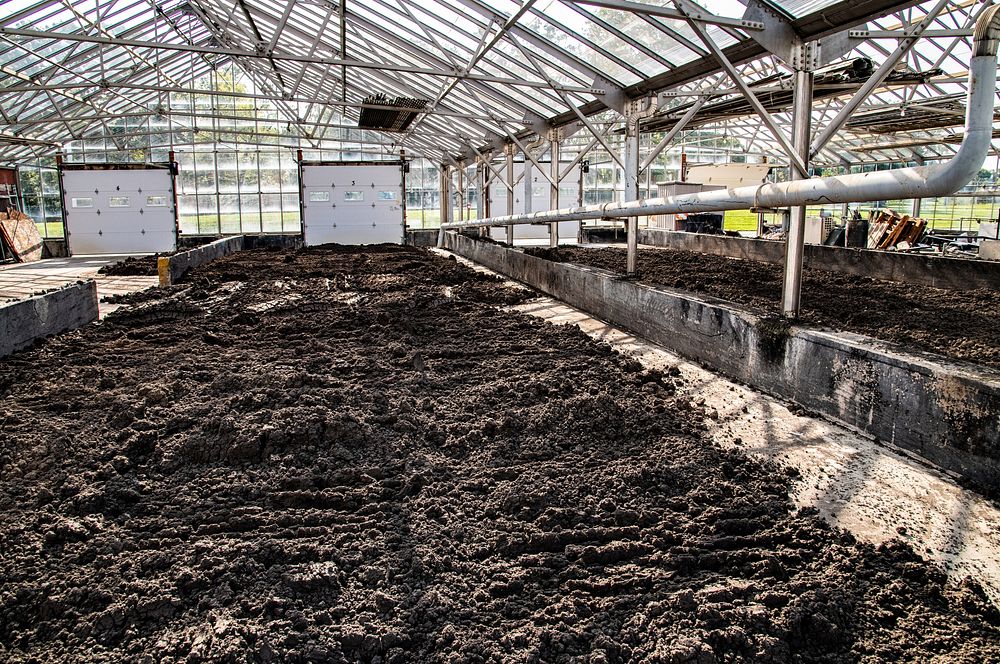
GREENHOUSE FOR DRYING OF SOLIDS
Westmoreland /Fayette Municipal Sewage Authority Plant Manager Darryl Wyke routinely checks the recently upgraded and expanded plant in Scottdale, PA, on Sept 3, 2021. The $16,000.000.00 project was comprised of $14,394,000.00 funded by the United States Department of Agriculture USDA Rural Development RD as a 40-year loan at 2.375% along with a $2,000,000.00 grant from the U.S. Army Corps of Engineers. The facility was upgraded to a sequencing batch reactor wastewater treatment facility capable of treating an average daily dry-weather flow of 2.5 million gallons per day, and a daily wet-weather flow of 25.0 million gallons per day. What was a field of trees three years ago, are now five tanks, each is 45' wide, 153' long, and 21' deep. Creating an approximate normal working capacity of 700,000 gallons each. This equals 50,000 gallons for every foot of depth in a single tank. The five tanks cover an area about the size of a football field. Sequencing batch reactors are a fill-and-draw activated sludge system for wastewater treatment. In this system, wastewater is added continuously to the four reactors to feed the activated sludge biomass. The biomass uses aeration to breathe and move around. In this natural reaction, the biomass feeds on the nutrients that are broken down and then multiplies. During a settling cycle, the biomass sinks to the bottom of the reactor. The final effluent, on top, is then discharged during the decant cycle. The excess biomass is pumped to a sludge-wasting tank where air is pumped through aerators on the bottom to bubble up through the biomass. The aeration keeps everything moving and mixing. This allows the microorganisms to stay in suspension to further digest the waste. Since there are no nutrients added to the wasting tank the microorganisms consume themselves or die off; a sign of this action is the brown foam floating in the tank. The sludge from the wasting tank is pumped from the bottom of the tank to the belt press room. A coagulant known as polymer is added to make solid particles adhere together. The solids move along a perforated belt where gravity begins the separation process. The solids then move forward to the mechanical separation of solid particles from the liquid using roller-driven screens. The solid particles are then conveyed to a greenhouse for sun-drying, which is sent to a landfill in a stabilized state. The liquid from the belt filter pressing process is returned for retreatment with the plant’s influent. Meanwhile, in the sequencing batch reactor tank, the processed water, free of solids, is decanted from the top levels of the reactor tank and passes numerous germicidal ultraviolet UV lights that break down the DNA of any remaining bacteria and eliminating any possible diseases before being discharged to Jacobs Creek; a tributary to the northward flowing Youghiogheny River, Monongahela River, and Ohio River; then travels south on the Mississippi River to the Gulf of Mexico. He and his team test the discharge twice a week. All water that leaves the plant is within safe levels, even during storm surges. The water is so clean that 85% of the samples are below lab detectable levels. Mr. Wyke enjoys his work and has a personal stake in maintaining safe results because the outflow is in the waterway that flows along the banks of his family home in the local area. USDA Photo Media by Lance Cheung. Original public domain image from Flickr